- Home
- TV History
- Network Studios History
- Cameras
- Archives
- Viewseum
- About / Comments
Skip to content
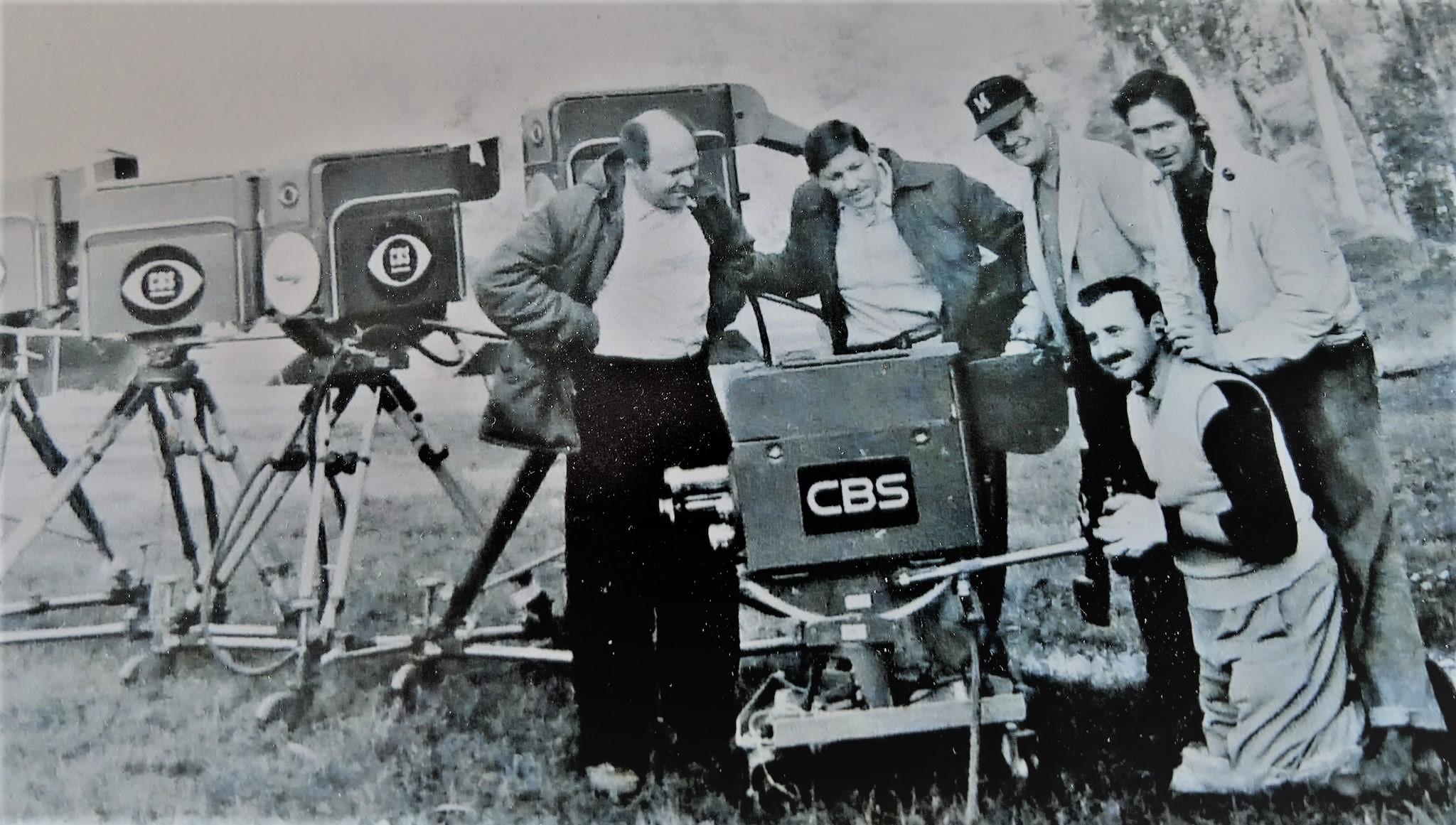





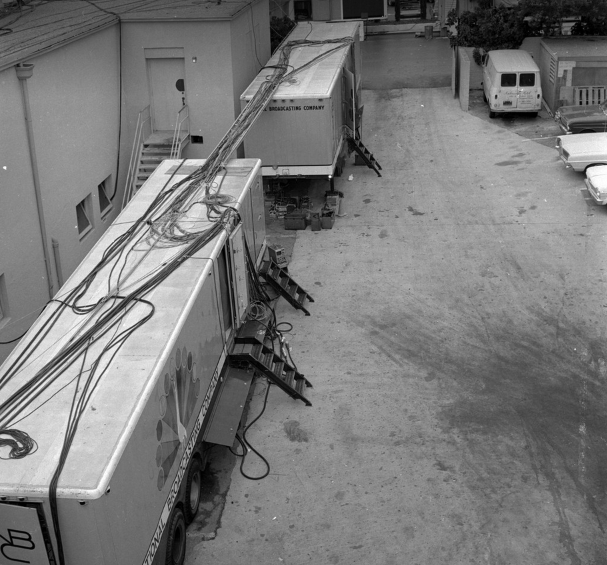


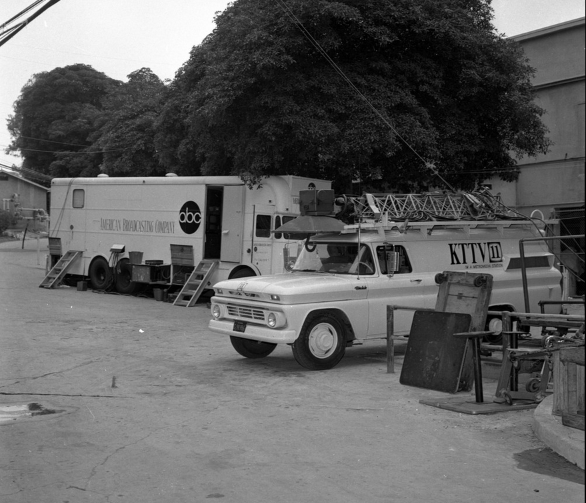
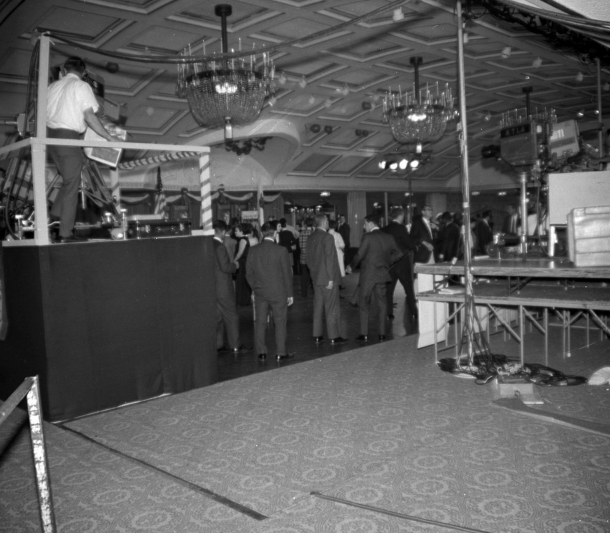
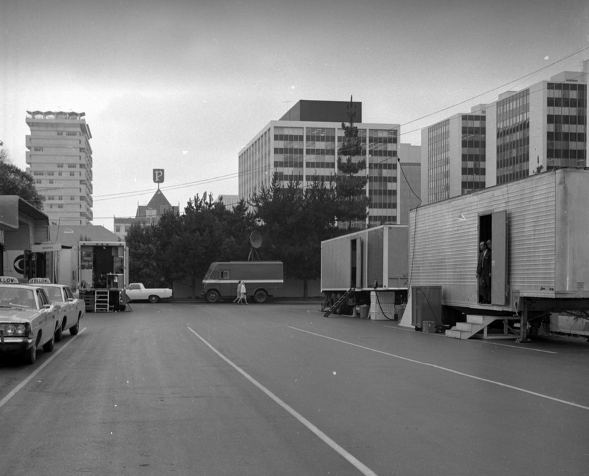


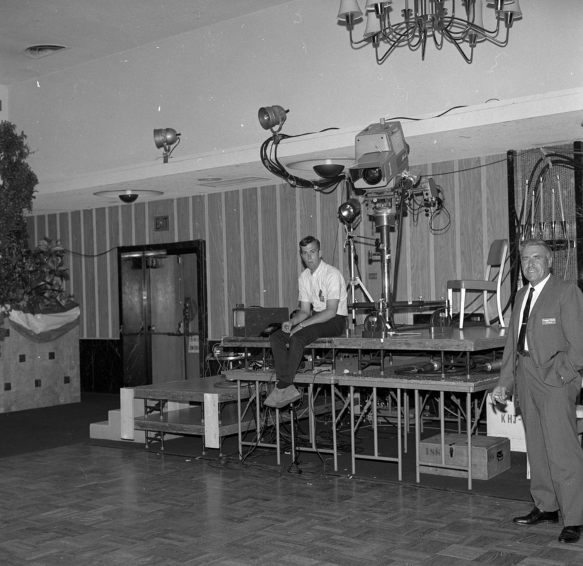
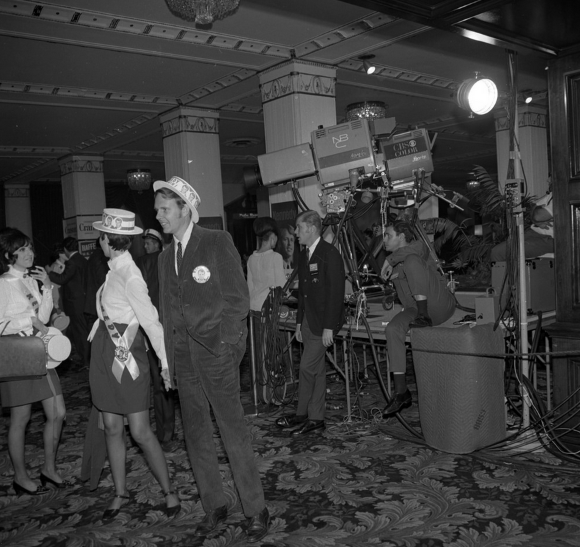
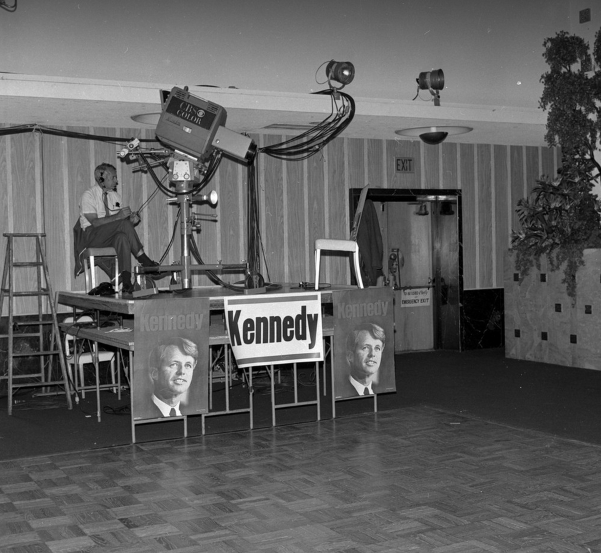






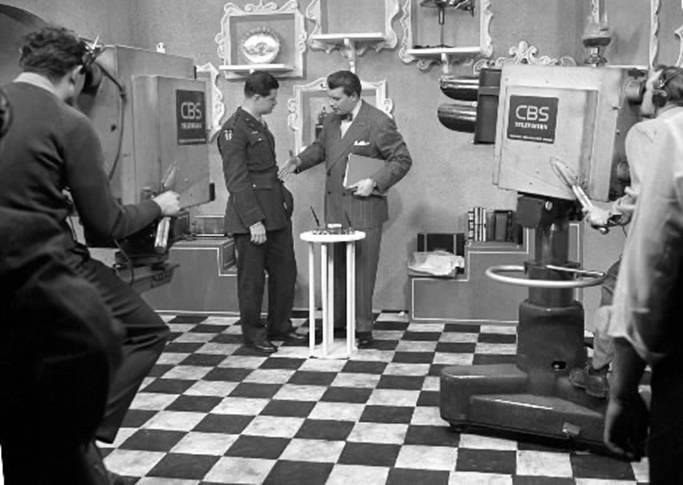

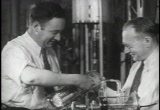

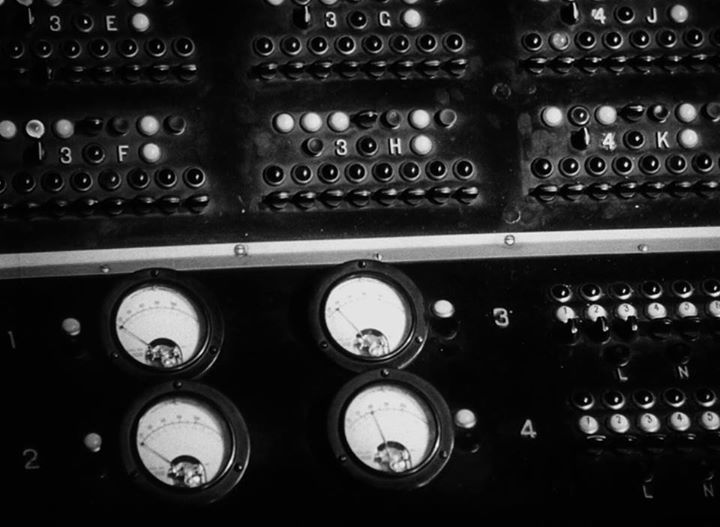







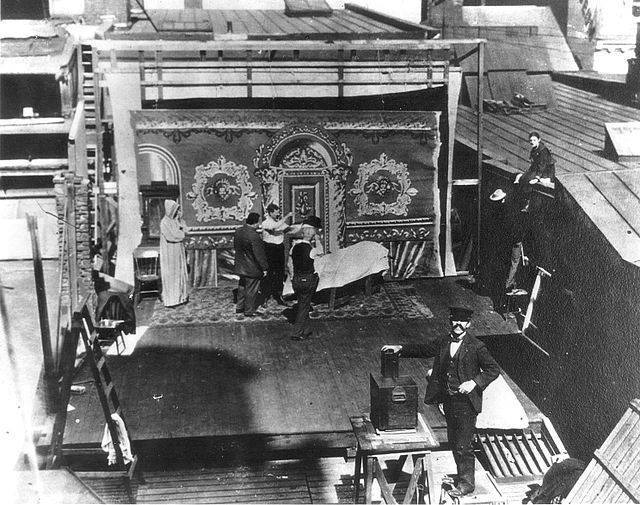

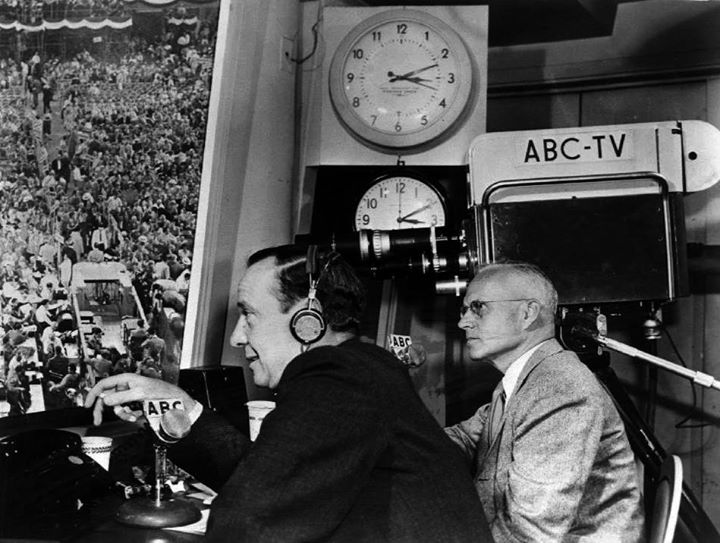

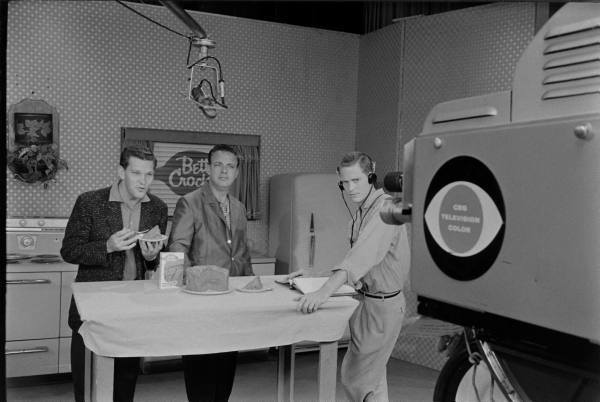



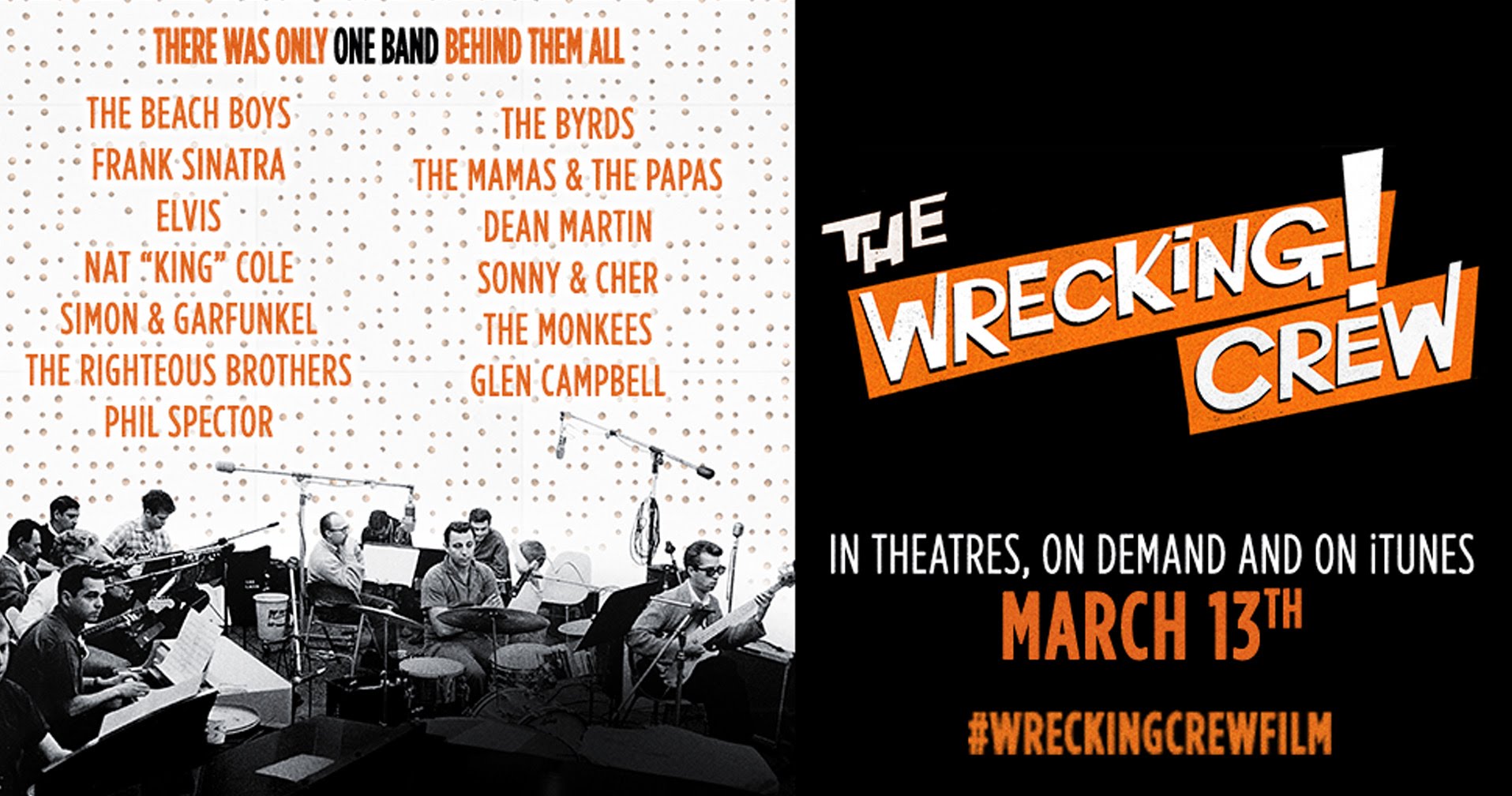

Posts in Category: TV History
Page 27 of 136
« Previous
1
2
3
4
5
6
7
8
9
10
11
12
13
14
15
16
17
18
19
20
21
22
23
24
25
26
27
28
29
30
31
32
33
34
35
36
37
38
39
40
41
42
43
44
45
46
47
48
49
50
51
52
53
54
55
56
57
58
59
60
61
62
63
64
65
66
67
68
69
70
71
72
73
74
75
76
77
78
79
80
81
82
83
84
85
86
87
88
89
90
91
92
93
94
95
96
97
98
99
100
101
102
103
104
105
106
107
108
109
110
111
112
113
114
115
116
117
118
119
120
121
122
123
124
125
126
127
128
129
130
131
132
133
134
135
136
Next » 

Brief History of CBS And The Masters Tournament…
On April 5, 2016
- TV History
When CBS televised its first Masters in 1956, the network used seven cameras and covered action from the final four holes.
This week at Augusta National, for the 61st consecutive year, considerably more personnel and technology will be in place. CBS will offer nine hours of live coverage this weekend, and it can show action from all 18 holes.
The Augusta National Golf Club, and network partner CBS have a unique relationship. CBS operates on one-year contracts and pays far less than market value for the rights. In return, Augusta National insists on approval of all announcers and dictates terms of the coverage, and as you’ll see in the yearly history below, they take this coverage seriously, and breaking the rules get announcers kicked off the show. Among the rules, no mention of prize money, plenty of references to “patrons”, no promotions for other TV programs, etc., and as always, the tournament has been presented with minimal commercial interruption.
Augusta National has always limited the amount of coverage by its TV partners. While it has allowed the number of TV hours to increase in recent years, it still lags significantly behind the other golf majors in this area.
Here is a look at how the coverage has evolved over time beginning with the first televised Masters in 1956.
Chronology of Masters TV coverage
1956 – CBS provided a half hour of coverage on Friday with one hour each on Saturday and Sunday. Chris Schenkel and Bud Palmer manned the microphones. CBS only covered holes 15-18 with all of its cameras stationary and most of them pointed at the greens.
1957 – Jim McKay became the lead announcer.
1958 – CBS expanded its Sunday coverage to 1.5 hours and eliminated the Friday coverage.
1959 – Frank Chirkinian produced his first Masters. CBS added cameras to cover more fairways and tees.
1961 – The tournament concluded on Monday due to weekend rain and CBS added an hour of Monday late afternoon coverage.
1962 – Schenkel resumed the lead broadcast role as McKay had moved to ABC. The Masters had an 18-hole playoff on Monday and CBS provided one hour of coverage.
1965 – Jack Whitaker took over the lead announcer role.
1966 – The Masters was televised in color for the first time. An 18-hole playoff was needed and CBS televised the end of it on Monday afternoon. This was the year that Whitaker made an on-air comment referring to the gallery surrounding the 18th green as a “mob”. For this, he was banned from the telecasts by Augusta National chairman Clifford Roberts for the next several years. Henry Longhurst called his first Masters for CBS.
1967 – A strike by the American Federation of Radio and Television Artists (AFTRA) impacted the coverage. With the regular CBS golf broadcasters honoring the strike, some CBS management personnel handled the telecast along with two top amateur players who were Augusta members.
1968 – Pat Summerall broadcast the Masters for the first time and anchored the coverage at hole 18. Frank Glieber also made his Masters TV debut.
1969 – Ray Scott joined the CBS telecast crew. So did Frank Gifford who worked golf for CBS for a few years before moving to ABC.
1970 – Scott took over as the 18th hole announcer. The final 18-hole playoff took place this year and CBS added late Monday afternoon coverage for that.
1973 – CBS expanded to 2 hours on Sunday. CBS added late afternoon coverage on Monday after rain necessitated a Monday finish. Ben Wright joined the CBS crew for the first time.
1974 – This was the last year that Scott served as lead announcer.
1975 – Vin Scully worked his first Masters and assumed the 18th tower announcer role.
1977 – CBS expanded to 2 hours on Saturday.
1980 – CBS increased the Sunday coverage to 2.5 hours.
1982 – This year saw a major change as the USA Network provided Thursday and Friday coverage (2 hours live each day along with a prime time replay). This was the first ever cable coverage for one of the golf majors. The USA coverage used the CBS production crews and CBS announcers.
1983 – Summerall took over the 18th hole tower role as Scully had moved to NBC. Verne Lundquist made his debut on the Masters. So did Brent Musburger who was stationed in Butler Cabin for the first of 6 consecutive years. CBS increased the Saturday coverage to 2.5 hours and Sunday to 3 hours. Due to rain, the tournament did not finish on Sunday, so CBS added late afternoon Monday coverage.
1986 – Gary McCord and Jim Nantz joined the CBS crew. Bob Carpenter hosted the USA coverage.
1988 – CBS shifted the Sunday TV window to end at 7 pm ET where it remains to this day.
1990 – Bill Macatee hosted the USA coverage and would do so for all subsequent years that USA had the TV rights.
1994 – McCord made the infamous on-air “bikini wax” reference while describing the speed of the Augusta greens and remarked that mounds behind the 17th green resembled “body bags”. These comments did not go over well with Augusta officials and despite still being a member of the CBS golf team, McCord has not worked the Masters since. That was also the last Masters tournament (and final CBS assignment of any kind) for Summerall who moved to Fox.
1995 – USA expanded the Thursday/Friday coverage to 2.5 hours each day. Nantz took over the lead announcer role.
1996 – Chirkinian produced the CBS telecast for the final time.
1997 – David Feherty called his first Masters on CBS as did Peter Oosterhuis.
2000 – Dick Enberg started a 7-year run of hosting the Masters from Butler Cabin. The Masters was televised live in HDTV for the first time.
2002 – Another major milestone took place this year as CBS increased the Sunday coverage to 4.5 hours and showed the leaders for all 18 holes. CBS had wanted to do this for a number of years, but tournament officials had always denied these requests in the past. This was also the last Masters in the TV booth for longtime lead analyst Ken Venturi.
2003 – Lanny Wadkins became the lead analyst and CBS expanded the Saturday coverage to 3.5 hours ending at 7 pm ET. The SD and HD productions of the event were unified. In the wake of the controversy over the Martha Burk protest regarding Augusta membership practices, the Masters chose to drop its sponsors. Both CBS and USA televised the event commercial-free. The same was true in 2004.
2005 – USA increased the Thursday/Friday coverage to 3 hours.
2006 – CBS added a one-hour special Jim Nantz Remembers Augusta which led into the Sunday coverage. That show looked back on the 1986 Masters using original CBS footage. This series has become an annual Masters Sunday tradition featuring vintage CBS telecast clips being rebroadcast for the first time.
2007 – Nick Faldo took over as CBS lead analyst joining Nantz in the 18th hole tower.
2008 – ESPN took over the Thursday/Friday coverage with Mike Tirico anchoring the action.
2009 – ESPN increased the Thursday/Friday coverage to 3.5 hours each day. CBS expanded the Sunday coverage to 5 hours.
2011 – ESPN expanded the Thursday/Friday coverage to 4.5 hours each day.
2013 – CBS increased the Saturday coverage to 4 hours. For both of the weekend rounds, CBS Sports Network aired a same-day prime time replay of the CBS network coverage.
This week’s weather here in Georgia looks great and the dogwoods and azaleas are busin’ out all over! -Bobby Ellerbee


Take Me Out To The Ballgame…With 13 Cameras!
On April 4, 2016
- TV History
Take Me Out To The Ballgame…With 13 Cameras!
On Opening Day, we’ve got some baseball stories for you, starting with this one. If you’ve ever wanted a really in depth look at how major league baseball is done, here you go! This three part, behind the scenes, tour in Cleveland shows us how this days game with Atlanta is done from start to finish on June 15, 2007.
This Cleveland setup is a bit different from the usual because at home, they can direct the game from a control room a few blocks away instead of from the truck. Links to all the parts are below and total time is about a half hour. Best viewed with a hotdog and beer.
https://www.youtube.com/watch?v=DrDF-9GwgIs Part 1
https://www.youtube.com/watch?v=PyuaKx2sjvM Part 2
https://www.youtube.com/watch?v=ho09S_RmcvE Part 3
A Behind The Scenes look at a SportsTime Ohio Broadcast between the Indians and the Atlanta Braves on June 15, 2007. I was one of the shooters at the ballpar…
The Night RFK Was Shot…Inside The Ambassador Hotel, Part 1 of 3
On April 3, 2016
- TV History
Rare Photos Of The Television Coverage…June 4, 1968
This is behind the hotel and shows a makeshift cable bridge between the two NBC trucks.Here are the two NBC trucks and the “cable bridge” made from a ladder. It may be that NBC had three trucks and a utility trailer there…see my comment and photo below.
Final Rare Photos Of The Television Coverage…June 4, 1968
Thanks for all the descriptive comments on the first two sets of photos. Hopefully these will answer some questions raised there, and thanks to Martin Perry for finding these Los Angeles Fire Department photos. More detail on the photos so click though them. Enjoy and share.
The Night RFK Was Shot…Inside The Ambassador Hotel, Part 2 of 3
On April 3, 2016
- TV History
Rare Photos Of The Television Coverage…June 4, 1968
I have had several request to repost these photos, so here is the second of three sets of photos taken the afternoon that Senator Robert Kennedy was killed at The Ambassador Hotel in Los Angeles. There is more on the orignal post text, quite a bit of detail on the photos, as well as some instructive comments from the first posting, so be sure and click on each image. -Bobby Ellerbee
This is in the Max Rafferty for Senate HQ in one of three ballrooms that were active that night with election activity. The camera on the left is from ABC and I think it is a black and white…maybe a TK30. CBS is in the middle with what looks like a Marconi Mark VII. The right cam is an NBC Norelco. I can see this at a different angle in another picture.Also behind the hotel, the ABC truck and KTTV’s utility truck, ABC was broadcasting in black and white. KTTV was using Norelco color and we’ll see their big trucks with CBS at the front of the building in a click or two.
I’m not sure where this is, maybe the Allan Cranston for Senate ballroom, but it is not The Embassy Room where the RFK HQ was that night as the ceiling is quite different. The camera on the far left is a Norelco from CBS and on the right is a KTLA TK30 and behind it, a Norelco PC60 from KTTV.
This the front of the Ambassador Hotel with two CBS trucks on the left and I think the trucks on the right belong to KTTV as they were covering this with Norelco color just like NBC and CBS.
https://www.youtube.com/watch?v=bsYLelmN6BA&ab_channel=ABCNews
I have added the ABC coverage from the next day with Frank Reynolds reporting. In it, you can see ABC’s video from the night before was shot in black and white. Also included in this clip is the voice of the Mutual reporter, Andy West who had live audio in the kitchen. It is quite chilling.
Today’s images include the network and local trucks from KTLA and KTTV and more photos from inside The Ambassador. I think it is best if I include the details of this set of photos on the pictures themselves, so please make sure you click on them individually. This is the only time and place these have been seen with any narration, so remember to share these. -Bobby Ellerbee
Many thanks to Martin Perry for finding these photos taken by the Los Angeles Fire Department. Six more pictures coming tomorrow!
The Night RFK Was Shot…Inside The Ambassador Hotel, Part 3 of 3
On April 3, 2016
- TV History
Rare Photos Of The Television Coverage…June 4, 1968
I have had several request to repost these photos, so here is the first of three sets of photos taken the afternoon that Senator Robert Kennedy was killed at The Ambassador Hotel in Los Angeles. There is more on the orignal post text, quite a bit of detail on the photos, as well as some instructive comments from the first posting, so be sure and click on each image. -Bobby Ellerbee
The Embassy Room was where the Kennedy party was. Notice the sign…Alan Cranston was running against Max Rafferty for the Senate seat and his election night HQ was also in the hotel. Kennedy was in the Embassy Room, Rafferty in a second ball room and Cranston was in a third ballroom. It was a busy night for the press.This is a CBS camera in the Kennedy HQ ballroom. Notice the Norelco camera is using an adapter to go from a twin cable output to a single cable. In a minute, you’ll see a CBS Norelco on this same wall…to the right of this.
Here is yet another shot of the lobby cameras taken from the entrance of the Embassy Room. I think the men at the platform are local CBS and NBC reporters.
Here’s a CBS camera on a great little Baughman pedestal. I think the NBC location is to the left of this position.
The Night RFK Was Shot…Inside The Ambassador Hotel, Part 1 of 3
Rare Photos Of The Television Coverage…June 4, 1968
We have all have scenes of that tragic event in our heads…the optimistic victory speech and then the horrific events in the ballroom kitchen where Sirhan Sirhan waited. I have often wondered about what else was going on in that room that night…where were the cameras, who covered this and more. Now, we’ll finally see.
Thanks to Martin Perry, I’ve located these photos taken by the Los Angeles Fire Department that night and they are quite interesting. I’m breaking these up into three parts and will post the other two parts Saturday and Sunday. There will be some interesting shots coming of all three network trucks as well as the KTLA and KTTV vans. I am still researching the events of that night and along the way, will include some of the back story in separate articles.
I think it is best if I include the details of this set of photos on the pictures themselves, so please make sure you click on them individually. This is the only time and place these have been seen with any narration, so remember to share these. -Bobby Ellerbee
Being A Member Of The “SNL” Band, And My Experience With Them…
On April 3, 2016
- TV History
Being A Member Of The “SNL” Band, And My Experience With Them…
http://www.avclub.com/article/whats-it-be-member-saturday-night-live-house-band-234547
At the link above, is a wonderful interview with SNL guitarist Jared Scharff, who’s been on the show for 9 year. In the article, there is also a 19 minute audio interview with the band’s leader, and master of the sax, Lenny Pickett.
I have a couple of great stories of my own about the band and Lenny, but have never had quite the right opportunity to share them, till now.
On May 2nd and 3rd, of 2014, I visited the Friday afternoon SNL rehearsal, and was there for the live dress rehearsal show on Saturday night, and got back to the hotel in time to see the 11:30 live show on TV. It was interesting to see what got cut.
On my Friday visit, I was there from 1:30 till 8:30 and was thrilled to see much of the show in rehearsal, and was glued to my seat on the studio floor. At one point, I went to the restroom, and on the way back to 8H, I met Lenny in the hall, and spoke with him for a few minutes.
To my amazement, he remembered meeting me in 1975 at a concert I produced inside Diamond Head Crater in Hawaii, with Santana, Hall & Oats, and the band he was in, Tower Of Power. Their great trumpet player, the late Mickey Gillette was a good friend. I had forgotten how tall Lenny was, and it was like talking to Big Bird.
Now this is the funny part…to me at least. As part of the warm up for the show, Colon Jost took the stage in front of the band. He told a few jokes and then said it was time to play, Stump The Band!
When Johnny Carson played this with the audience, they could hardly ever stump Doc and the boys, and I always loved it when Letterman and Paul came up with perfect renditions too, right on the spot, so this should be fun.
Without hesitation, from my front row seat, I yelled out to Jost and Lenny, “How about “Boogaloo Down Broadway” by The Fantastic Johnny C”? Jost replied, “You mean Johnny Cash”? I could see Lenny shaking his head “no” to Colin’s question, so I answered “No, Colin, Johnny C…it’s an old soul song”.
Instantly the band hit a couple of notes from the intro, that were immediacy recognizable to me from the song, and then stopped. At that point, Lenny started talking to the band, and they to each other and all agreeing…”Yes, we know it”. And that was it, and the whole studio erupted in laughs.
They are a tricky bunch, but among the most talented musicians anywhere. But, so you won’t be left wanting, to Boogaloo Down Broadway, here is a link to the tune. Thanks to Jodie Peeler for sharing this article, full of great video. Enjoy! -Bobby Ellerbee
“The Kraft Television Theater”…TV’s First Anthology Series
On April 2, 2016
- TV History
“The Kraft Television Theater”…TV’s First Anthology Series
This was the earliest and, at the time, the most famous of television’s live dramatic anthologies, and helped define the “golden age” of television. The hour-long series, sponsored by Kraft Foods, premiered on Wednesday, May 7th, 1947 on NBC. It would run continuously, with no summer breaks, for the next eleven and a half years. The final episode was broadcast on Wednesday, October 1st, 1958.
The Kraft show set the stage for all that followed, including “The Philco Playhouse,” “Playhouse 90,” “Robert Montgomery Presents.” and many more.
Here are two very rare photos taken in early May, 1947, in what was at the time, NBC’s only television studio…3H. If you ever wondered what camera the Kraft Cameraman was based on, now you know. It was the RCA A 500 Iconoscope camera (that you can see in the photo below), which was used in Studio 3H until April of 1948, when they were replaced by RCA TK30s. As a reminder, “The Howdy Doody Show” started in December of ’47 with the A 500s, and in May 1947, Studio 8G became NBC’s second 30 Rock TV studio.
As you can see in the photo above of the Kraft Cameraman opening graphic, the cameraman model originally rotated on a round countersunk piece of balsa wood.
The in-studio photo below is from the first broadcast on May 7, 1947, which was titled “Double Door”, and was one of the first network directing jobs for NBC legend Fred Coe.
Between 1947 and 1958, the Kraft Television Theater presented more than 650 comedies and dramas, and in all 11 years, it was ranked in the Top 25 shows.
Although Kraft Television Theater quickly established itself as a critical favorite after its premiere in May 1947, in Kraft’s estimation the show was only as useful as its ability to move product. In this it succeeded beyond fondest expectations. The first indication of the magnitude of the program’s sales prowess came from Kraft’s ad agency, J. Walter Thompson, which reported in June ’47, that Imperial Cheese, a new Kraft product advertised nowhere else but on television, was flying off grocers’ shelves.
The decision to feature food preparation commercials, over hard-sell personality or price appeals was not made lightly. Kraft’s advertising personnel were concerned that using a model or a recognized spokesman would detract from the product, so they designed live commercials that used a single-focus technique.
Each program had, on average, a pair of two minute breaks, at which time cameras focused on a pair of feminine hands as they demonstrated the preparation of various dishes as announcer Ed Herlihy relayed the recipe to the viewer. This careful approach paid off for Kraft; sales of advertised products rose dramatically in television cities and, even more importantly, a poll conducted by Television Magazine, in November 1947 showed that “Kraft Television Theater” had the highest sponsor identification of any show on television.
Actors on the series included James Dean, Anne Francis, Lee Grant, Helen Hayes, Jack Lemmon, Grace Kelly, Jack Klugman, Cloris Leachman, Patrick McVey, Michael Higgins, John Newland, Paul Newman, Leslie Nielsen, Anthony Perkins, Judson Pratt, Lee Remick, George C. Scott, Rod Steiger, and Joanne Woodward.
Directors for the series included Sidney Lumet, George Roy Hill, Fielder Cook, and John Boulting, and the many contributing writers included Rod Serling and JP Miller.
Serling won an Emmy for scripting “Patterns”, which was the best remembered episode of the series. The drama had such an impact that it made television history by staging a second live encore performance three weeks later and was developed as a feature film of the same name. -Bobby Ellerbee
By the way, it was only in 1954 that Kraft made the now famous toy cameraman available for 50 cents, and a couple of box tops.
An Interesting Development…WLS TV’s News Film Process, 1974
On April 1, 2016
- TV History
An Interesting Development…WLS TV’s News Film Process, 1974
It is easy to forget that even into the early 1980s, some stations were still shooting film. RCA’s first ENG (Electronic News Gathering) camera, the TK76, only debuted in 1976, and by 1984, there were over 2000 of them in use worldwide. -Bobby Ellerbee
WLS Channel 7 – Eyewitness News – “Film Developing” (1974)
The transfer of this video clip made possible by your generous donations!
Here’s a rare excerpt from WLS Channel 7’s Eyewitness News, from back in the days when all reports from out “in the field” came from film, and sometimes were being developed as the newscast was running.
Frank Mathie introduces the “Action Seven” piece, with Geoff Smith reporting about how film stories aired on Eyewitness News are shot; in this instance, one film crew is shooting another film crew. Cinema Processors, Inc. at 211 East Grand was the lab where film reports from both Channel 7 and WGN Channel 9 were developed, amounting to 10 million feet of newsfilm a year (96,000 feet a month). Geoff gives a detailed account of the complex process for developing the film that airs on the two stations, and also mentions other Cinema Processors clients such as the Chicago Bears (for game film, of which 30,000 feet alone are processed every Saturday in season), five major colleges, several smaller ones and 225 high schools. Shots of the lab in action are seen all through this piece. Fahey Flynn can be seen for a couple seconds at the end too.
Notice that the “Action Seven” logo, set in Helvetica Bold, looks very reminiscent of the logo used in the early years of WLS’s The 3:30 Movie (as well as The 4:30 Movie on both WABC Channel 7 in New York and WXYZ Channel 7 in Detroit).
Note: This was originally broadcast in color, but captured on this early home videotape recording in black and white. There are some tape-tracking problems that are noticeable at certain points on this clip.
This aired on local Chicago TV on Tuesday, April 9th 1974.
Some Little Known Facts Of Early Television Production…
On April 1, 2016
- Archives, TV History
Some Little Known Facts Of Early Television Production…
Yesterday, I posted the early history of television’s first real studio; RCA’s Studio 3H inside NBC. Operating in secret, for the first year of 1935, RCA had built 3 studio style Iconoscope cameras for 3H, and only 3, but in 1939, they built 3 more for CBS, for use on W2XAB.
Also in 1935, RCA was approached by Alda Bedford and Knut Gnusson, who had built a new camera support system they called a pedestal. Amazingly, the up and down movement of the center column was operated by an electric motor, and was quite smooth. It was not until 1959, with the Houston Fearless TD 9, that the electronic lift was seen again in any US pedestal.
Along with the patent images of the pedestal, I have included the RCA patent image for the inside of these first studio style Iconoscope cameras. As I have mentioned here before, the viewfinder showed only an optical image on ground glass, and to the great frustration of those early cameramen, the image was upside down, and backward. If one of those cameramen offered me a ride home, and I had to give him directions to get there, I think I would have taken the subway. -Bobby Ellerbee


A Guided Tour Of Television’s First Studio…NBC’s 3H, 1939
On March 31, 2016
- TV History, Viewseum
A Guided Tour Of Television’s First Studio…NBC’s 3H, 1939
The things I have learned from NBC vets, and visits to 30 Rock, allow us to see this old video with new eyes. This is an RCA promotional film from 1939 designed to introduce television to the public and would have been broadcast on NBC during the Worlds Fair and shown in the RCA Exhibit at the fair and the RCA Exhibition Hall on 49th Street, next to 30 Rockefeller Plaza.
Before we start, here is some information that will help you get your bearings. This is something I learned while standing in the space that once was Studio 3H, but is now 3K.
Now, you enter the third floor studios from the main hallway in the building’s interior, but when this film was made, that hallway was mostly for tour groups. Engineers and talent used a different interior hallway (that was on the backside of the studios and against the building’s walls), to avoid the crowds. So, when you see the control room window, it will be on the back wall and is accessed from the fourth floor. The orchestra seen here will be directly under the visitor’s observation window, which faced the 4H control room window. The visitor/tour group window was also on the fourth floor which was accessed from the main hallways used for access today. If it seems confusing, I think seeing the video will clarify that.
At :49 we are at the RCA Labs in Princeton NJ where tube and camera tests are underway.
At 1:49 we see the antenna atop The Empire State Building and just after that, we see the transmitter room a few floors under it.
At 2:25 we see the new mobile units leaving 30 Rock and arriving at a horse race track for a live broadcast. This is a great sequence and gives us a good look at these trucks.
At 4:19 we finally enter Studio 3H. Watch closely! Notice the camera on the left has its top flipped up and the cameraman is making some internal adjustments. Notice on the right…the camera is rising. These pedestals had an internal electric motor to ped up and down. The cameraman with the rising pedestal is NBC’s first…Albert Protzman.
At 4:35 we see cameraman Don Pike on the Houston Fearless Panoram dolly. Don was NBC’s second cameraman.
At 4:44 we see up top, the visitor’s observation window on the fourth floor. This is the wall that opens into the main interior hallway that we use now. The smaller window below the 4H control room was the original 3H radio control room. Opposite this, at the main hallway end of the studio was a storage room which became a rear screen projection room.
At 4:51 we see the control room window. This is on the fourth floor and accessed by hallways on the back of the studios, against the exterior walls of the building.
At 5:04 the cameraman on the left is NBC’s great TD, Heino Ripp, on the right is NBC’s second cameraman Don Pike.
At 5:15 we see NBC’s first cameraman, Albert Protzman, manning the title card camera.
At 5:30, the broadcast starts. If the center camera were to tilt all the way up, we would see the visitor observation window. Behind the orchastra, would be the door to the 3rd floor hallway in today’s configuration.
At 5:57, notice the big tally lights under the camera lens (left and right of the cable). They are green. Before there were red tally lights, they used the green tally color to denote which camera was on the air.
At 6:17, notice the man on the far right. He is the director and as of late, I have identified him as William States who went on to be a technical director for the great Fred Coe. States later moved to Los Angeles and was a director at KTLA and can be seen there at this link https://eyesofageneration.com/january-1-1961-behind-the-scenes-at-ktla-the-rose-parade/
At 6:48 we get a look over the shoulder of the people in the control room looking out on the studio.
As the feature approaches the end, we go to the control room for a while. At the back desk, the director is in the foreground, closest to us. The woman is what was then called the production director who was mostly concerned with the script, runtime, cues and talent…today that would be an associate director. The man on the far end is what was then called the video engineer and is doing the switching…today we call this the technical director. At the front desk is the video man (closest) who is shading the cameras and on his right is the audio man.
Enjoy and share! -Bobby Ellerbee
A Brief History Of Television’s First Real Home…NBC’s Studio 3H
On March 31, 2016
- Archives, TV History
This is a rare, digitally enhanced photo of the NBC Radio Master Control board from 1933…the year RCA and NBC moved into 30 Rockefeller Plaza.
In the beginning, Studio 3H was radio studio, just one of six medium sized spaces on the 3rd floor, which were about half the size of 3A and 3B. At the time, there were roughly 30 NBC radio studios in the building, but RCA had plans for 3H.
In late 1935, two years after Radio City opened, NBC Radio Studio 3H was converted to RCA Television Studio 3H and technically, would remain an RCA domain until 1939, at which time W2XBS and this studio were put under the control of NBC Television.
It was done under a blanket of secrecy. This mysterious new space was kept secret due to competitive developments for a year, while low key experimental broadcasts from 3H were done, but by early in 1936, RCA decided to go public with the news of their electronic television operations.
After the experimental public broadcasts were started with the three live Iconoscope cameras, RCA also took over a space on the 5th floor for film and called that new area Studio 5F, which was linked to the 3H control room.
Until 1951, 3H was used for experimental and regular programming, and was NBC’s only permanently equipped studio till radio studio 8G began television trials in 1946. Some of the earliest network shows from 3H were “The Kraft Music Hall,” “Television Scene Magazine,” “The Howdy Doody Show” and more. All these shows started out in 3H with the big Iconoscope cameras, and in April of 1948, 3H finally got the new RCA TK30s. The next month, 8G was converted to television.
In 1951, Howdy and the other shows done here moved out, and 3H would become the home of the experimental color tests after the Wardman Park color tests concluded in Washington. The Wardman color cameras were not installed in 3H, however the Washington color veterans were brought from there to continue color tests with the new “coffin cameras.” The joke was, these huge new umber gray cameras were big enough to bury a man in. These were the predecessor to the TK40s and this is the first appearance of the rounded top viewfinder. The color tests from 3H, and later, The Colonial Theater were broadcast over RCA’s experimental color station KE2XJV.
Variety like demonstration shows were done weekdays at 10, 2 and 4 and were staged with vivid colored wardrobes and sets. These shows were mostly for the engineers in New York and RCA’s Princeton labs who watched on closed circuit feeds. Not one to ever miss a marketing opportunity though, these shows were also fed to a half dozen custom built color receivers that were on display in the RCA Exhibition Hall in Rockefeller Plaza. In early ’53 these daily shows would move to The Colonial Theater which was where the new prototype TK40 cameras were beginning to be tested.
After the color tests left for the Colonial, 3H was still involved in color monitor tests, but even then, it stayed busy with regular 15 minute daily programs and live commercials coming from the studio with TK30s wheeled in from Studio 3B.
In the summer of 1955 3H was closed as construction crews took out the wall between 3H and 3F to create the first color studio inside Radio City. The new studio was to become 3K and with a double debut, both Studio 3K and Howdy Doody went to live color the afternoon of September 12, 1955.
Today, 3K is used by MSNBC and is the home to most of their hosts after 7PM, including Chris Hayes, and Lawrence O’Donnell. There is more on the photos, so click through! Enjoy, and there is more to come on 3H. -Bobby Ellerbee
NBC radio studios on the third floor, as they were in 1933
Inside Studio 3H, notice the control room on the 4th floor. To help get your bearings in today’s configuration, the main hallway is behind the photographer taking this.
Inside the 3H control room 1936. This space was actually called 4H.
Miss Color TV, Marie McNamara in Studio 3H with the “Coffin Cameras” This was the experimental version of the TK40 prototype cameras. These were never used at The Colonial…those were the real prototypes and were silver.
This is a rare color shot of the RCA Exhibition Hall on 49th Street, across from 30 Rock, where the closed circuit color shows could be seen by the public. In 1952, this became home of the “Today” show.
This is me kissing the floor of this hallowed ground. To my right is where 3H was, and the white line is about where 3H and 3F came together to make 3K.


The Human Test Patterns Who First Calibrated Color TV
On March 30, 2016
- TV History
A Wonderful Primer On Early Color Television…
Written around the story of the ladies that were “Miss Color TV”, NBC’s Marie McNamara, and CBS’s Patty Painter, this is a very well done article on the progressions and setbacks encountered by both networks, in their race to bring color to the small screen. Enjoy and share! -Bobby Ellerbee
The Human Test Patterns Who First Calibrated Color TV
The white women known in the 1950s as “Miss Color TV” reinforced longstanding hierarchies of gender and race that were built into generations of technologies.
“Peter Pan”…How To Fly And Get Good Audio At The Same Time
On March 7, 2015
- TV History
“Peter Pan”…How To Fly And Get Good Audio At The Same Time
60 years ago today, NBC presented “Peter Pan”, for the first time on television, in living color, but getting great video wasn’t the only challenge. Here’s a story I did last year on Mary Martin’s hidden mic. Enjoy and share! -Bobby Ellerbee
‘Peter Pan’…How To Fly And Get Audio At The Same Time
This is Director Jerome Robbins flying with Mary Martin in March of 1955 at NBC Brooklyn. When Robbins directed the show on Broadway, he didn’t have to worry about audio, but when it came to the television production he did. How do you mic a flying Mary Martin?
Booms were used for most of the show, but for the flying sequences, something special was called for. In 1953, Shur had introduced “The Vagabond” wireless mic which was used by Marlin Monroe when she was interviewed by Edward R. Murrow on ‘Person To Person’ in 1955.
They tried a Vagabond, but it was not strong enough, so NBC engineers came up with a stronger unit. The mic was on Martin’s chest under her costume and the transmitter was under her arm. The antenna was in a special belt she wore. In order to receive the signal, wires were embedded in the floor of the set, and strung from the lighting grid. Enjoy and share! -Bobby Ellerbee


March 6, 1981…Walter Cronkite’s Farewell: The Day Hard News Died
On March 6, 2015
- TV History
March 6, 1981…Walter Cronkite’s Farewell: The Day Hard News Died
34 years ago today, Walter Cronkite left the anchor desk and television news changed forever. Under the expert hand of a real reporter, “The CBS Evening News” had set the standard and a high bar for newscasts. To their credit, NBC and ABC news also excelled in their journalistic efforts in reporting the news of the day.
The problems began at CBS after Cronkite and William Paley retired; the problem had a name….Van Gordon Sauter.
After he became president of CBS News in 1981, Mr. Sauter made drastic changes. Among them were budget cuts and the layoff or forced retirement of many longtime CBS News reporters and producers, and a shift away from straight reporting from Washington and New York, toward more soft features.
To many CBS News staffers, the changes were appalling, epitomizing the triumph of style over substance. Sound familiar?
Part of the “softening”, was in part due to Dan Rather, who looked terribly uncomfortable behind the anchor desk, and with Rather’s help, Sauter set out to not only soften Rather with sweaters, but with stories aimed at women, to attract more of them as viewers.
Sauter was also a corporate ladder climber, and was heavily influenced by the CBS finance executives at “Black Rock”. As mentioned above, he went along with suggestions to cut the news department’s budget, which Paley would never have allowed. Sauter took it a step further though, and this was the sound of the death knell that spread to other networks.
It was Suater’s idea to make the News Division a profit center. In the past, Paley had allowed the news department to operate in the red, because he considered news a public trust and service, and funded it with the vast profits from the other areas of CBS like the entertainment division. When Sauter sought to make it a profit center, that meant content would be driven by ratings, and what ever it took to get the ratings, was what the news would become. Women were the main new target in the new scheme…that meant feminine focus, or “powder puff” reporting.
This profit center idea is why we now have the network news shows that are 40% headlines and 60% Facebook and Entertainment Tonight…to attract the Millennial audience.
The day after the financier Laurence A. Tisch gained control of CBS, Mr. Sauter was asked to resign. By then though, the damage was done and looks to be irreversible. Perhaps the events of late at NBC, and more changes that are coming there, will give news departments pause to consider turning the clock back 34 years!
What do you think of the news today? Enjoy and share! -Bobby Ellerbee
http://www.youtube.com/watch?v=G5tdqojA26E
From the CBS News archives, legendary anchorman Walter Cronkite signs off for the final time on the “CBS Evening News.” Cronkite manned the anchor desk from …
TeleTales #107…The Way We Were; 1899
On March 5, 2015
- TV History
TeleTales #107…The Way We Were; 1899
Before seeing at a distance, or tele-vision, was possible, there was a new thing called motion pictures, that was just as exciting a proposition. When film making began, the only way to get enough light was to shoot outdoors, even if the scene was taking place inside.
This photo shows the Lubin Studios rooftop location in Philadelphia in 1899. The Edison Studios had a similar arrangement in New Jersey, but their studio was mounted on a turntable and could follow the sun. Enjoy and share! -Bobby Ellerbee
TeleTales #106…ABC’s First News Stars; John Daly And Quincy Howe
On March 5, 2015
- TV History
TeleTales #106…ABC’s First News Stars; John Daly And Quincy Howe
Both men started out with CBS Radio and both worked with Edward R. Murrow in Europe during WWII, with a staff that included Charles Collingwood, William L. Shirer, Eric Sevareid, Joseph C. Harsch, H. V. Kaltenborn and Robert Trout.
Daly actually covered the famous, General George Patten. “spapping” incident. In 1950, He became the host of “What’s My Line” on CBS. Around ’53, Daly also became the vice president in charge of news, special events, and public affairs, religious programs and sports for ABC and won three Peabody Awards.
From 1953 to 1960, he anchored ABC news broadcasts and was the face of the network’s news division, even though “What’s My Line” was then on CBS. This was a very rare instance of a television personality working on two different networks simultaneously. (Technically, Daly worked for Goodson–Todman Productions). As if that wasn’t enough of an oddity, Daly also filled in occasionally on “The Today Show” on NBC, making him one of the few people in early television to work simultaneously on all three networks.
Quincy Howe was best known for his CBS radio broadcasts during World War II. Howe served as director of the American Civil Liberties Union before the Second World War, and as chief editor at Simon & Schuster from 1935 to 1942. He left CBS in 1947 to join ABC. Howe moderated the fourth and final Kennedy/Nixon debate on October 21, 1960, and retired from broadcasting in 1974.
When Mr Howe won a Peabody Award in 1955, this is the story that accompanied the presentation.
“The distinguished historian, journalist and commentator Quincy Howe has long been a great asset to broadcasting. His five-times-a-week commentaries on the ABC Radio Network are objective and penetrating analyses of the important issues of our times. His new documentary television series entitled “Outside U.S.A.” is an outstanding contribution to the understanding of the significant events and developments around the world. The variety and effectiveness of its presentation have made this program a most significant contribution of television to the promotion of international understanding. In recognition, the Peabody Award is hereby presented.” Enjoy and share! -Bobby Ellerbee
TeleTales #105…Before They Were Famous: Narz And Powers
On March 5, 2015
- TV History
TeleTales #105…Before They Were Famous: Narz And Powers
From the late 1950’s, here’s a shot of a commercial rehearsal on “The Bob Crosby Show” at Television City. On the right is floor director Dave Powers. He would go on to direct “The Carol Burnett Show,” “Three’s Company,” “The Ropers,” and “Mama’s Family.”
On the left is the man most of us know as Tom Kennedy, but as he has told me, at the time this photo was taken, he was still Jim Narz. He is the younger brother of another famous Hollywood host and announcer Jack Narz. As Jim’s fame grew, so did confusion among agents and show bookers, so out of respect to Jack, he took a new stage name.
As you see in the photo, Tom Kennedy is doing a Betty Crocker cake mix spot. One of the first times he did this live, he thought he would help the “sell” and took a bite. No one had told him the cake was made of putty, to hold up under the lights, and when he bit into it live, Bob Crosby laughed so hard, it took him five minutes to finally quit laughing. Enjoy and share! -Bobby Ellerbee


The Wrecking Crew Recording A Beach Boys Smash, 1966
On March 3, 2015
- TV History
The Wrecking Crew Recording A Beach Boys Smash, 1966
This is a great video that not only let’s us hear the music tracks being recorded, with Brian Wilson producing, but we get to see the members of The Wrecking Crew with captioned call outs on who they were and what they played. I know this is not television, but like TV’s part in our culture, so is music…especially THIS music. Please also see today’s story on The Wrecking Crew movie coming March 13. Enjoy and share! -Bobby Ellerbee
http://www.youtube.com/watch?v=ofByti7A4uM
A video detailing the creative process behind “Wouldn’t It Be Nice” from The Beach Boys’ 1966 Album “Pet Sounds”. Thanks to Josh Hoisington for some informat…


The Ultimate Behind The Scenes Music Movie…
On March 3, 2015
- TV History
The Ultimate Behind The Scenes Music Movie…Coming In 10 Days
Much like The Funk Brothers, that were member of the session band at Motown, The Wrecking Crew was the pop version in LA. These are the best of the best, and backed the biggest names in the business. In the next post, I’ll play you some spectacular audio from the making of The Beach Boys hit, “Wouldn’t Be Nice”. Enjoy and share! -Bobby Ellerbee
http://www.youtube.com/watch?v=SX5BCgmr7tg&t=25
Like on Facebook: https://www.facebook.com/WreckingCrewFilm The Beach Boys, Elvis, Frank Sinatra, Nate King Cole and many more. Behind their success was a gr…
Page 27 of 136
« Previous
1
2
3
4
5
6
7
8
9
10
11
12
13
14
15
16
17
18
19
20
21
22
23
24
25
26
27
28
29
30
31
32
33
34
35
36
37
38
39
40
41
42
43
44
45
46
47
48
49
50
51
52
53
54
55
56
57
58
59
60
61
62
63
64
65
66
67
68
69
70
71
72
73
74
75
76
77
78
79
80
81
82
83
84
85
86
87
88
89
90
91
92
93
94
95
96
97
98
99
100
101
102
103
104
105
106
107
108
109
110
111
112
113
114
115
116
117
118
119
120
121
122
123
124
125
126
127
128
129
130
131
132
133
134
135
136
Next »